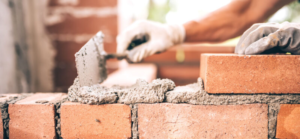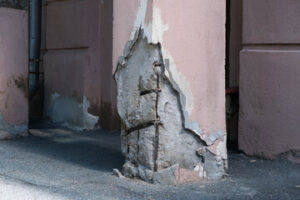Fleas are parasites that feed on blood and can cause itching in pets and humans. They are brought to homes by wild animals and strays.
Thoroughly wash pet bedding, plush toys, and furniture covers in hot soapy water to kill adult fleas and break their life cycle. Vacuum carpets and rugs every day, especially in the cracks and crevices where flea eggs hatch. Call Bakersfield Pest Control expert today.

Diatomaceous Earth (DE)
Diatomaceous earth (DE) is a powder made from ground fossilized remains of algae that once swam in fresh water. It is a natural, safe, and inexpensive way to prevent fleas in pets and home environments. DE is also helpful in the garden for preventing fleas and other pests from breeding. It works by dehydrating and breaking down the exoskeleton of the insect when it comes in contact with it, effectively killing the bug. It can be applied directly to the pet’s coat or spread on bedding and carpeting in the home.
First, determine where your pet spends the most time. Then dust areas where they reside with food-grade DE, including their bedding and any carpeting that is in direct contact with the ground. It is important to use food-grade DE rather than industrial (filter) grade, which is dangerous to pets and humans.
When applying DE to your pet, be sure not to get it in their eyes, nose, or mouth. It can irritate those sensitive areas if inhaled. It is also important to be careful when rubbing the DE into your pet’s coat as it can irritate their skin and cause itching. It is a good idea to apply the DE with a pet brush to distribute it evenly and make sure not to miss any hard-to-reach spots.
After your pet is coated with DE, let it sit for about a day to allow the powder to work on the fleas and other pests. Once the DE has dried, vacuum up the powder and any dead pests. Repeat the process weekly for a few weeks to help prevent fleas from returning and continuing their life cycle in your pet and home.
You can also apply DE in your garden by mixing it with water. For example, you can make a DE spray by combining 4 to 6 tablespoons of DE with 1 gallon of water in a spray bottle or garden pump sprayer and spraying it over the area you wish to treat. This is useful if you have large areas to cover, such as a lawn or garden area.
Salt
There are several natural home remedies that people use to combat fleas. These include things like lemon peels, powder laundromat soap, and salt. These can be used in conjunction with a regular vacuuming routine to help get rid of fleas. These products work to dehydrate fleas and kill them without the use of chemicals. This can be an especially helpful remedy for households with pets, as it is a safe way to get rid of fleas that are on furniture and carpeting.
Many people sprinkle salt over their floors and carpeting. This works similarly to diatomaceous earth, as it dehydrates the exoskeleton of the flea and helps to kill it. The key is to be consistent and thorough with your application. It is also important to vacuum up the salt each time you do this so that you don’t end up re-introducing the fleas to your home.
Another popular option is to spray a solution of one part water and one part salt over your furniture, carpeting, pet beds, and other areas where fleas are prevalent. This mixture makes it very hard for the fleas to breathe and can kill them instantly. It is important to keep in mind that this won’t kill eggs and larvae, so it will need to be repeated regularly to control fleas.
Some people also find that a few drops of cedar oil can be effective at repelling fleas. Cedar oil is a natural pesticide that will kill fleas on contact. It can be sprayed directly onto your furniture, pet bedding, and other areas where fleas are present. This is a great option for households with animals that may be sensitive to other insecticides.
While some of these home remedies can be useful in treating a minor flea problem, severe infestations often require the use of commercial treatments to eliminate them. It is important to treat your pet and their environment first before trying these treatments, as fleas will usually hide in places that you can’t reach. It is also helpful to clear out any bushes, wood piles, and other areas where fleas tend to congregate outside the house.
Insecticides
Fleas need a blood meal to survive, so they jump onto dogs, cats, and squirrels to bite them. Heavy flea infestations can cause allergies and skin problems in pets. Fleas also carry tapeworms that can infect some dogs and cats. If enough pets are infested with fleas, fleas will often hop on people and bite them too. Despite this, fleas are not likely to transmit diseases to humans.
Insecticides can be used to control fleas in the home. Insecticide sprays can be applied with a hand sprayer or aerosol to infested carpeting and furniture. The most effective products contain both an adulticide (kills adults) and an insect growth regulator, such as methoprene or pyriproxyfen.
When using an insecticide, read the label carefully and follow all safety tips. Work in a well-ventilated area and wear safety equipment, like gloves. Using a pesticide indoors is best left to a professional, especially if you have children or pets in the house.
Vacuum your carpeting and cushioned furniture every day to remove flea eggs and larvae. Steam cleaning can help, too. Fleas develop in the dark, so they are more likely to be found in dark places like underneath carpeting, under furniture, or in cracks and crevices.
If vacuuming and steam cleaning do not reduce your flea problem, sprinkle food-grade diatomaceous earth (DE) on carpets and around furniture. DE is a fascinating natural substance that kills many insects by drying them out. This is safe for people and pets, though it may irritate the lungs and eyes of sensitive individuals. DE should be left on for several days before vacuuming.
Treat your pet with an oral or topical flea-preventative medicine during the spring and summer months. This helps protect your pet and keeps it from fleas that can spread disease to humans. Consider treating kennels, dog runs, and cat houses, too. You can repel fleas in your yard by spraying nematodes, microscopic worms that kill flea larvae and cocoons, on your lawn. Or, plant fennel, mint, lavender, or other plants that fleas dislike.
Prevention
Getting rid of fleas requires an approach that tackles all stages of their life cycle. It also requires treating the pet’s environment as well as the house and yard.
Adult fleas live on animals and suck blood, but they also lay many eggs. Eggs fall off of pets and are deposited on floors, furniture, and in pet bedding. The eggs hatch into tiny larvae that feed on pet feces and other organic debris. Larvae then spin cocoons and emerge as adults.
To break this life cycle, vacuum thoroughly every day to remove egg sacs and adult fleas. Be sure to empty the vacuum bag and dispose of it outside. Use a water-based flea spray that contains a pesticide to reach deep down in carpets and crevices where adult fleas and larvae hide.
A professional flea treatment can also be a good preventative measure. Upon arriving at your home, a pest specialist will conduct a thorough inspection indoors and outdoors to determine the extent of the flea problem and develop an effective treatment plan.
For a quick fix, try some of the many available home remedies for fleas. Baking soda and salt, for example, can help repel fleas by hurting them with their abrasiveness. Sprinkle a thin layer of either on carpets and furniture and vacuum it up after several days.
In the yard, try spraying nematodes – microscopic worms that kill flea larvae and cocoons – on your lawn. You can purchase them at garden supply stores, and they are safe for pets and children. Also consider planting fennel, lavender, and mint, which fleas don’t like, around your house to deter them from your yard.
Fleas are adapted to warm environments and thrive in dense vegetation, where they can stay hidden from the sun. However, they prefer to be close to their hosts, so if your yard has a high population of pets or other wildlife, it can attract fleas to the house as well. If you notice itchy spots on your feet or ankles, it’s a good idea to contact a professional for a flea inspection.







